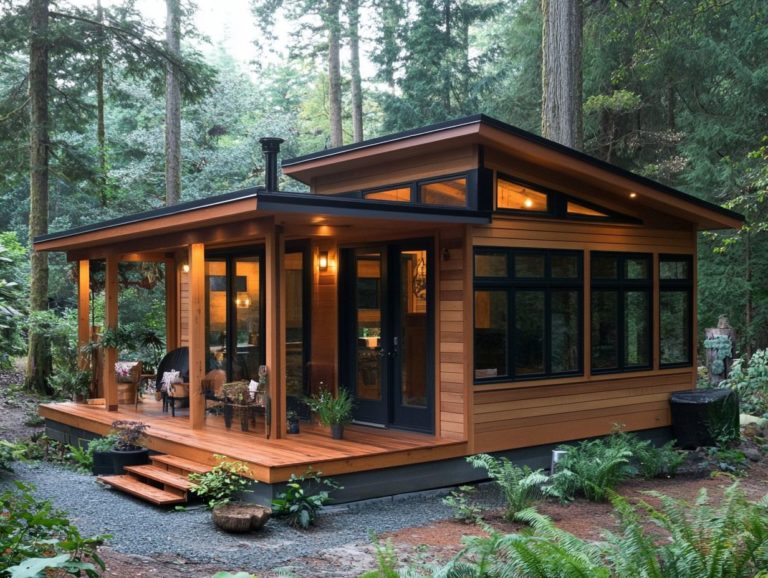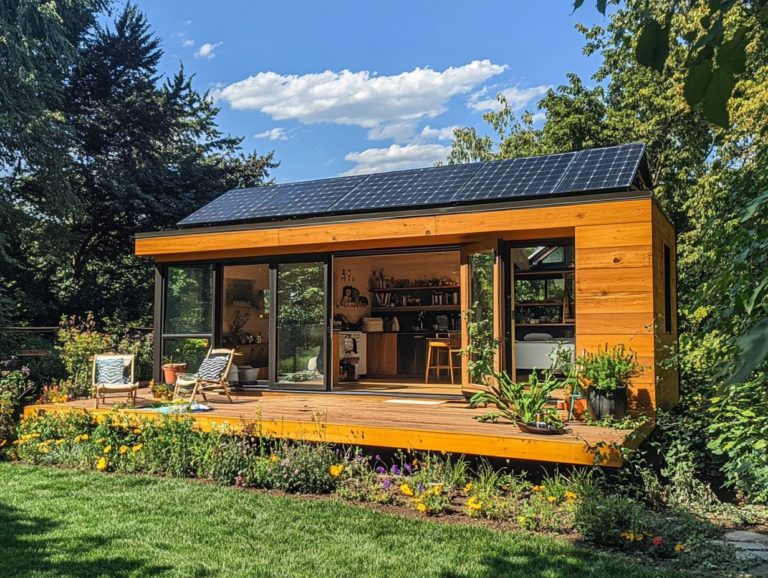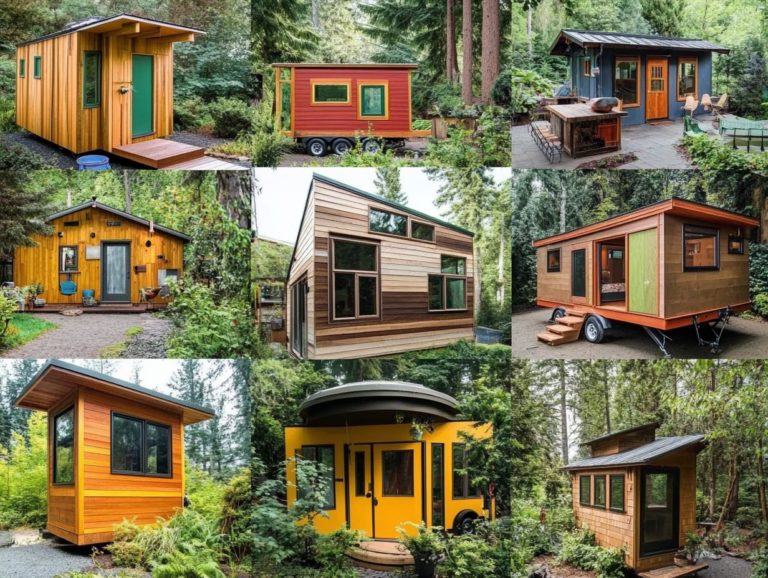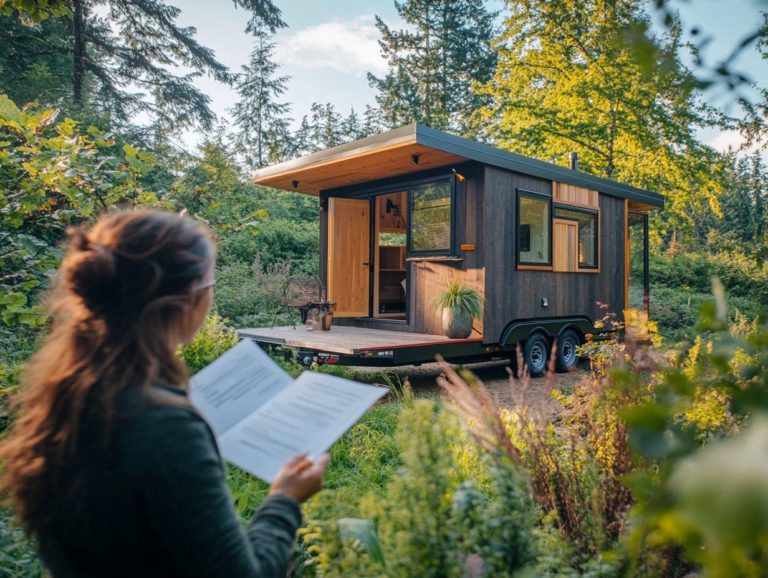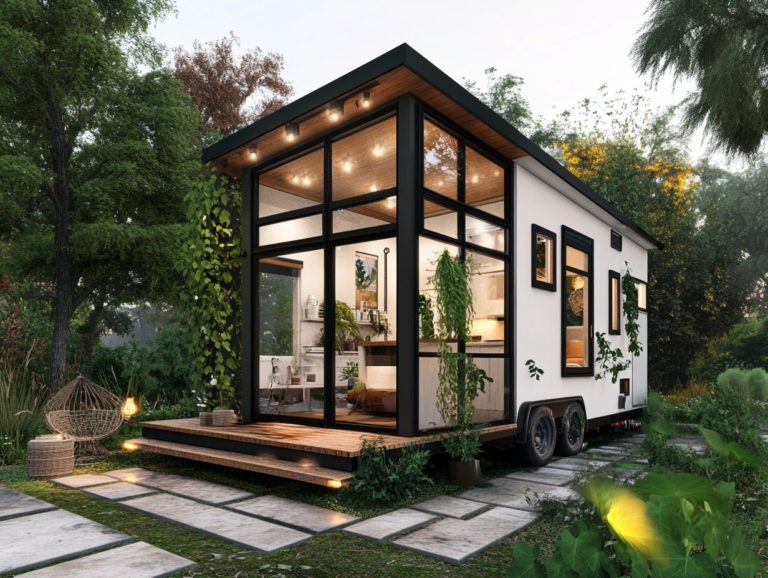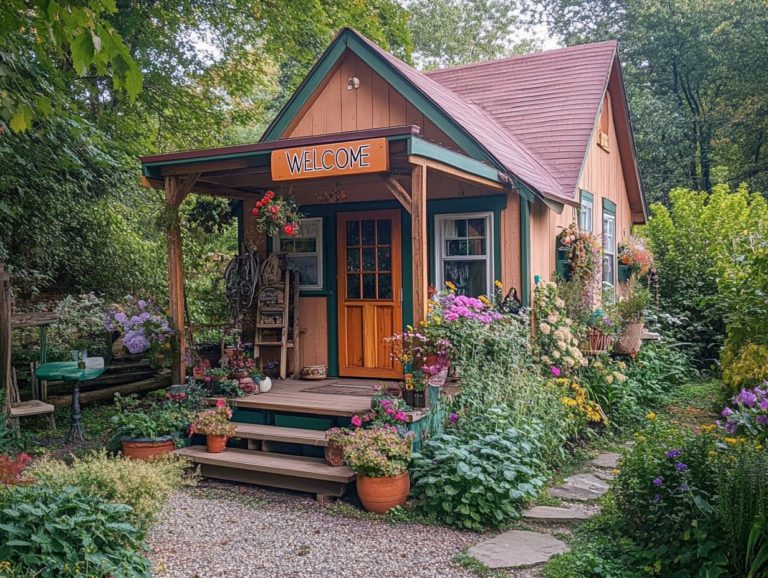What Are the Best Heating Options for Tiny Houses?
Selecting the ideal heating system for your tiny house is essential for both comfort and efficiency.
Given your limited space, the heating option you choose can profoundly influence your living experience and energy expenses.
This article delves into a variety of heating alternatives such as electric heating, wood-burning stoves, propane heaters, and solar heating that are particularly well-suited for tiny homes. It also highlights crucial factors to consider in your decision-making process, along with vital installation and safety tips to create a warm and secure living space.
Contents [hide]
- Key Takeaways:
- Types of Heating Options for Tiny Houses
- Factors to Consider When Choosing a Heating Option
- Installation and Safety Tips
- Frequently Asked Questions
- What are the best heating options for tiny houses?
- Are mini-split systems a good heating option for tiny houses?
- Can wood stoves be used to heat a tiny house?
- What is the most affordable heating option for a tiny house?
- Should I consider using propane or gas heating for my tiny house?
- Are there any alternative heating options for tiny houses?
Key Takeaways:
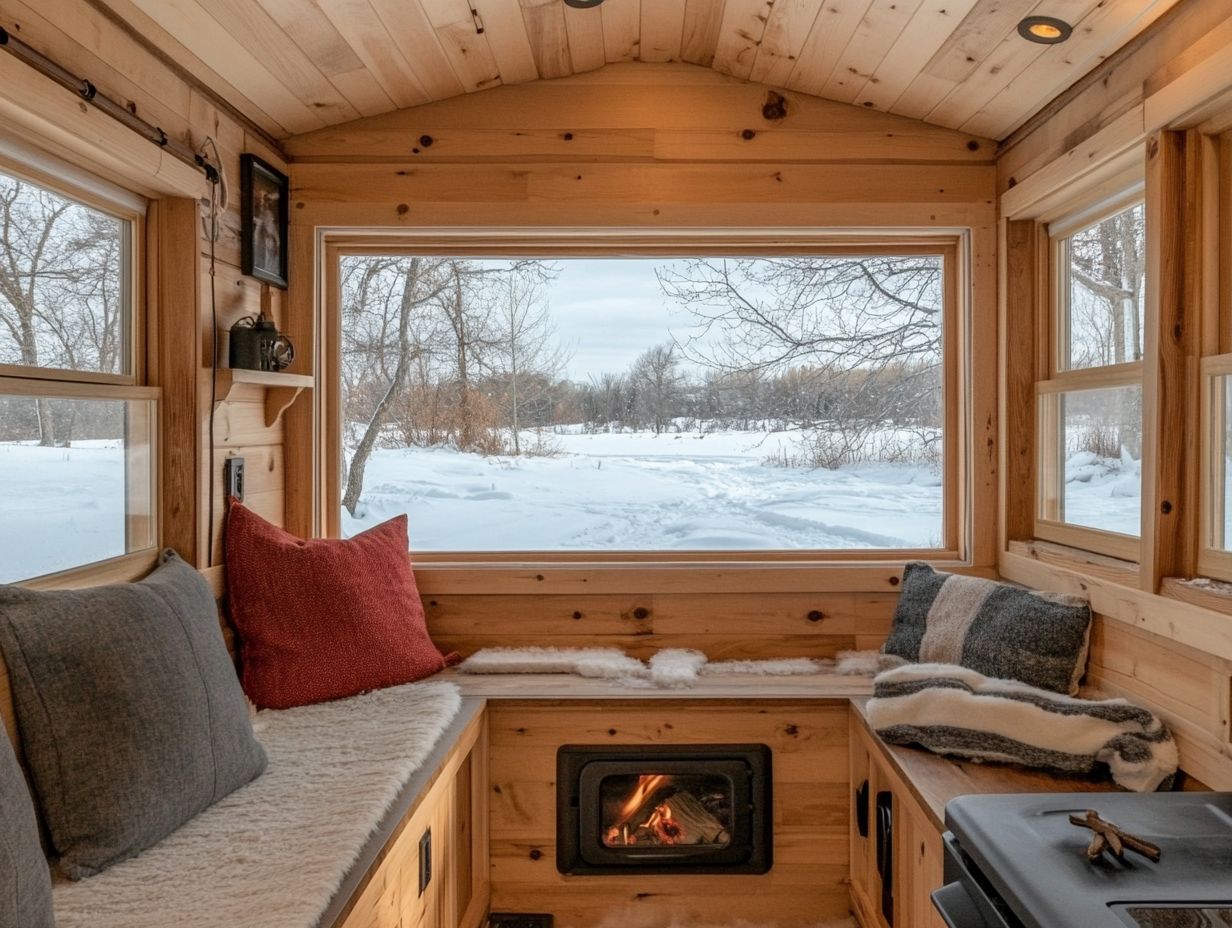
- Electric heating is a convenient and affordable option for tiny houses, but may not be suitable for colder climates or off-grid living.
- Wood-burning stoves provide efficient and eco-friendly heating, but require regular maintenance and may not be feasible for those with limited space.
- Solar heating is a sustainable and energy-efficient choice for tiny houses, but may not be enough to provide adequate heating in colder regions.
Why Choosing the Right Heating System is Important
Choosing the right heating system for your tiny home is essential not just for ensuring your comfort. It also maximizes energy efficiency.
In the limited space of these micro-homes, selecting an appropriate heating solution can profoundly influence your heating costs, temperature regulation, and overall livability. An HVAC (heating, ventilation, and air conditioning) expert can help you deal with the special challenges that tiny homes present, such as insulation efficiency and the necessity for effective ventilation circulation.
Options like ductless mini splits and electric space heaters allow you to customize your heating strategy according to your specific needs. Ductless systems deliver efficient, zone-based heating that can warm smaller areas without the bulkiness of traditional systems.
Electric space heaters are ideal for providing immediate warmth in targeted spots. These choices not only help minimize energy consumption but also offer flexibility in controlling indoor temperatures.
Imagine coming home to a cozy, warm space! By investing in the right heating solution, you can create a warm haven in your tiny home while keeping those utility bills in check.
Types of Heating Options for Tiny Houses
In terms of heating your tiny house, you have a range of options that cater to your unique needs and preferences. Whether you lean towards electric heating, wood-burning stoves, propane heaters, or even solar heating solutions, each choice offers its own set of advantages and challenges.
It s crucial for you to consider factors such as space-saving design and installation requirements to select the best heating method for your cozy abode.
Electric Heating
Electric heating stands out as an excellent choice for tiny homes, thanks to its convenience and flexibility. You have a range of options at your fingertips, from electric space heaters to radiant floor heating systems, all designed to efficiently warm your limited space.
Not only does this method create a cozy atmosphere, but it also boosts energy efficiency, making it a cost-effective solution for homeowners. The variety of electric heaters available caters to your specific needs; for example, wall-mounted units help you save precious floor space, while convection heaters work wonders in circulating warm air effectively.
Utilizing programmable thermostats allows you to optimize energy consumption, letting you schedule heating for peak hours or when you re home. If you’re navigating a small area, understanding your layout can be key to strategically placing heaters, ensuring uniform warmth and maximizing comfort.
By embracing these practices, you can cultivate a welcoming environment without sacrificing energy savings.
Don t wait start exploring the best heating options for your tiny home today!
Wood Burning Stoves
Wood burning stoves present an exceptional heating solution for those residing in tiny homes. They deliver impressive thermal output while infusing your space with a cozy ambiance that enhances the allure of micro-living.
These stoves not only provide efficient heating but also act as striking focal points within a room, enveloping your surroundings in a welcome warmth. The crackling flames foster an inviting atmosphere, perfect for gatherings or tranquil evenings at home. While alternatives like pellet stoves offer a cleaner burn, they often miss the rustic charm that traditional wood burning stoves exude.
When compared to electric or gas heaters, wood stoves typically result in lower energy bills. This makes them a smart and stylish choice for discerning homeowners who desire both style and practicality.
Propane Heaters
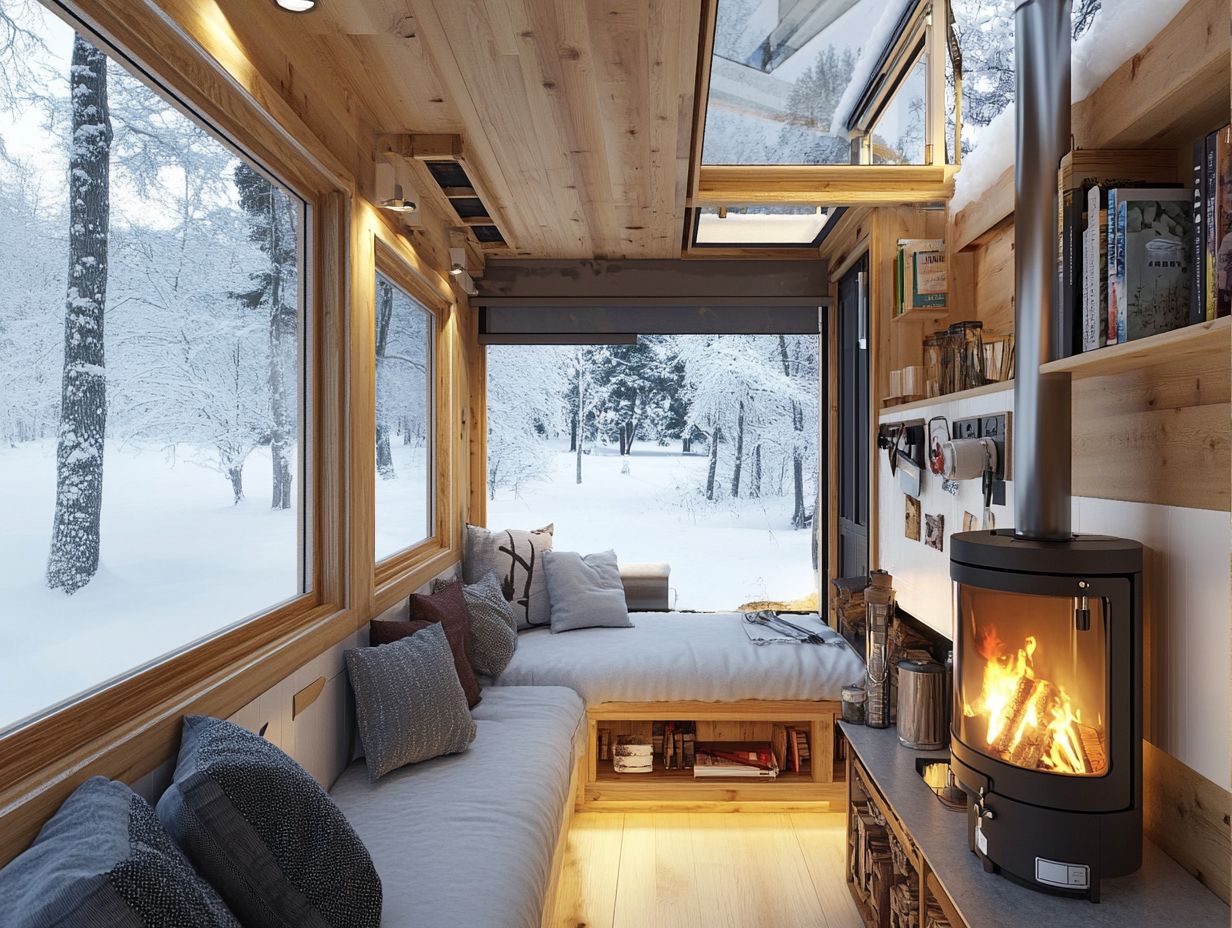
Propane heaters present an efficient and budget-friendly heating solution for tiny homes. They are an appealing choice for those navigating the challenges of limited space and energy consumption.
These heaters use propane gas, a clean-burning fuel that helps keep your energy bills in check, even during the chillier months. Their compact design allows for seamless integration into your small living space without sacrificing any valuable square footage.
In terms of cost-effectiveness, propane heaters typically require a lower initial investment than electric systems or wood-burning stoves while delivering quick and effective warmth.
Like any heating system, propane heaters require maintenance, including regular inspections and potential tank refills, to ensure safety and efficiency over time. When weighing your options, you ll likely find that propane systems offer more versatility and convenience, providing dependable warmth without the complications that often come with traditional heating methods.
Solar Heating
Solar heating stands out as an innovative choice for tiny homes, especially for those who aspire to embrace off-grid living or lessen their reliance on traditional power sources.
By tapping into the sun’s abundant energy, these systems offer a renewable source of heat and help you save on utility bills over time. Understanding how solar heating works reveals how it effectively absorbs, stores, and distributes heat crucial for maximizing energy efficiency in compact spaces.
As an environmentally conscious homeowner, you can enjoy a reduced carbon footprint. With a smart installation, you can customize the system to fit your roof space perfectly without requiring extensive renovations. While the initial investment might appear steep, the long-term savings and potential increase in property value make it a compelling option for those passionate about sustainable living.
Factors to Consider When Choosing a Heating Option
Choosing the ideal heating solution for your tiny house requires careful consideration of several key factors. Think about the size and layout of your space, the climate in your region, your budgetary constraints, and the maintenance requirements of various heating options.
Grasping these elements can greatly affect your comfort and enhance the overall energy efficiency of your home.
Size and Layout of Tiny House
The size and layout of your tiny house are crucial in determining the most effective heating option, as they directly influence insulation efficiency and air circulation two key elements that impact temperature regulation.
When considering heating solutions, examine how various floor plans can create unique microclimates within your space. For example, an open-concept design can enhance warmth distribution, while segmented layouts may require strategically placed heating units to ensure every nook and cranny stays comfortable.
Your choice of heater types should align with the dimensions of your dwelling. Some heaters perform better in compact areas, optimizing both energy efficiency and comfort. By thoughtfully evaluating these factors, you can discover a heating strategy that not only meets your specific needs but also harmonizes beautifully with the overall aesthetic of your tiny home.
Don’t wait! Choose the best heating solution today to transform your tiny home into a cozy haven.
Climate and Location
Understanding the climate and location of your tiny home is crucial when choosing heating solutions that can effectively address seasonal variations and temperature extremes.
Different regions showcase unique weather patterns, ranging from frigid winters to blistering summers. A home in a milder climate may only need a simpler heating solution. For example, if your tiny home is nestled in a snow-prone area, you might need a more robust system that consistently delivers warmth during the harshest cold spells.
This thoughtful selection process isn’t just about comfort; it’s also about energy efficiency. By taking local climate patterns into account, you can ensure that your heating systems cater to your needs and adapt seamlessly to the ever-changing demands of each season.
Budget and Maintenance
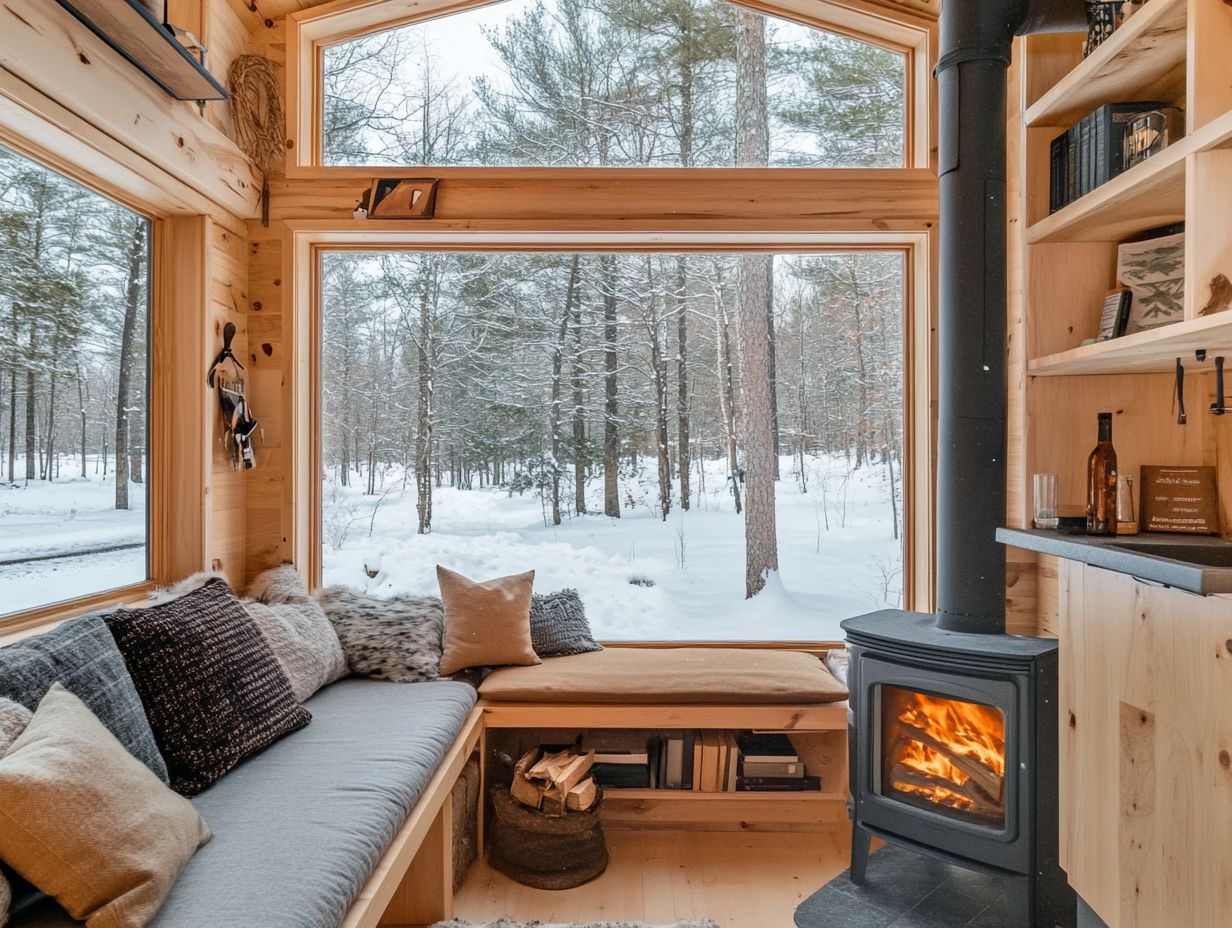
Budget and maintenance needs are critical factors to consider when selecting heating options for tiny homes, as they greatly impact your overall energy consumption and long-term costs.
Finding the right balance between upfront expenses and long-term efficiency is key for you as a homeowner aiming for smart investments. When evaluating different systems, look beyond just the initial purchase price; ongoing costs related to maintenance and energy consumption also deserve your attention.
Affordable heating solutions are vital to ensure your comfort isn t compromised by financial concerns. By choosing systems that emphasize efficiency, you can lower your energy bills while enjoying a cozy living environment all year round.
In this way, making informed selections paves the way for sustainable living without straining your budget.
Installation and Safety Tips
Proper installation techniques are crucial for ensuring both the safety and efficiency of heating solutions in tiny homes. Incorrect installations can lead to significant safety hazards and subpar heating performance that detracts from your living experience.
Prioritizing careful setup can make all the difference in creating a cozy and secure space.
Proper Installation Techniques
Adhering to proper installation techniques is crucial for improving how well your heating works in your tiny home, especially when dealing with complex systems where expert guidance can be invaluable.
Take ductless heating systems that don’t require traditional ductwork, for example. They demand precise placement to achieve maximum efficiency, while electric heaters require careful consideration of electrical load. It’s essential to recognize that each heating method presents its own installation challenges. Selecting the right location for a mini split can dramatically influence both efficiency and comfort levels in your space.
On the other hand, electric heaters may necessitate specific wiring and circuit needs to ensure safety and effectiveness. Consulting an HVAC (Heating, Ventilation, and Air Conditioning) expert can provide you with valuable insights tailored specifically to the unique needs of tiny living spaces.
Precautions for Safe Heating
Implementing safety precautions is essential for maintaining a secure heating environment in your tiny home, effectively addressing the common risks associated with various heating methods while ensuring optimal energy efficiency.
Whether you re relying on a cozy wood-burning stove or a compact propane heater, each method presents its own unique set of challenges. For wood-burning stoves, regularly inspect the chimney for creosote buildup, which can lead to dangerous flue fires, and ensure that proper ventilation is maintained to minimize smoke exposure.
When using propane heaters, regularly check for gas leaks using soapy water. Check your carbon monoxide detectors regularly to ensure they work.
Regular maintenance, like cleaning and servicing your heating units, keeps you safe and helps your equipment last longer. Staying proactive in these tasks is critical for anyone living in a tiny home.
Frequently Asked Questions
What are the best heating options for tiny houses?
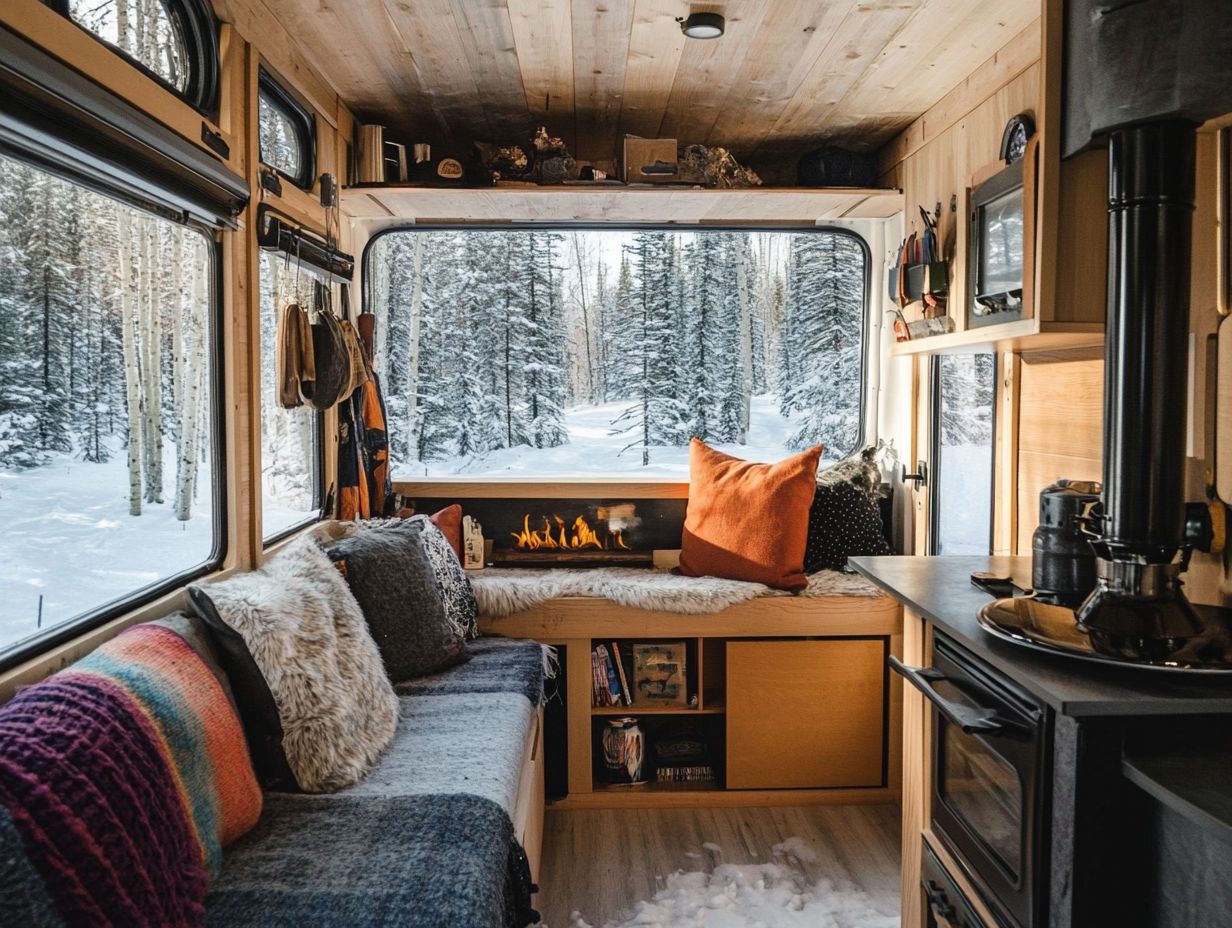
The best heating options for tiny houses depend on factors such as climate, budget, and personal preferences. Popular options include mini-split systems, wood stoves, and electric space heaters.
Are mini-split systems a good heating option for tiny houses?
Mini-split systems are a great choice for tiny houses because they are compact, energy-efficient, and provide both heating and cooling. They can be installed in various parts of your home for added flexibility.
Can wood stoves be used to heat a tiny house?
Yes, wood stoves can be a cozy and cost-effective heating option for tiny houses. However, they require proper installation and maintenance to ensure safety and efficiency.
What is the most affordable heating option for a tiny house?
Looking for an affordable heating option? Electric space heaters might be just what you need! They are inexpensive to purchase and operate, though they may not be as energy-efficient as other options.
Should I consider using propane or gas heating for my tiny house?
This depends on your location and the availability of these fuels. Propane or gas heating can be convenient and reliable, but it may also be more expensive and require regular refills.
Are there any alternative heating options for tiny houses?
Yes, alternative heating options include pellet stoves, radiant floor heating, and even solar-powered systems. It’s crucial to research and consider the specific needs and limitations of your tiny house before choosing an alternative option.

